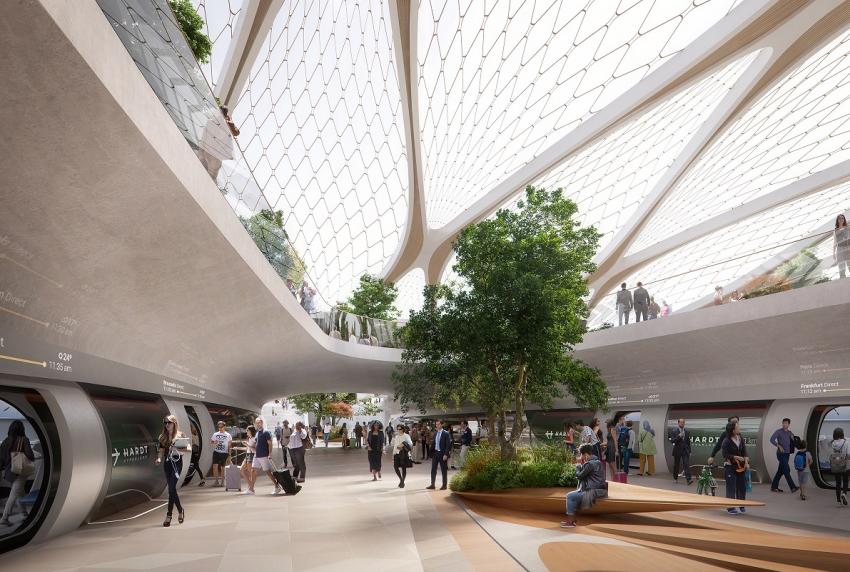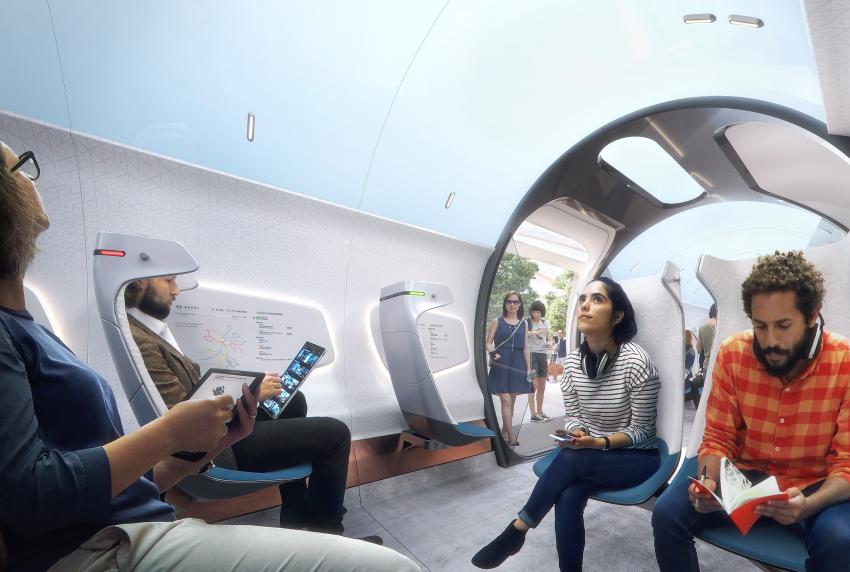UNSFutures envisage building as solar-powered battery
The first edition of HyperSummit has taken place in Utrecht, organised by Hardt Hyperloop as part of the firm’s goal to create a new on-demand, fast, affordable and emission-free transport system. Summit topics focussed on urgency, research and collaboration, with numerous partners speaking about their possible contributions to the Hardt’s proposed European hyperloop. The UNStudio Futures Team presented a vision for the ‘Station of the Future’, as part of Implementation Programme for the integration of the new system into towns and cities.
UNStudio envisage the hyperloop station as a series of tessellating components which could be adapted to a range of possible locations: city-centre, edge of city or as part of an existing infrastructure hub, such as an airport. The design seeks to create a relationship with the local environment, building modules upwards to fit a dense inner-city neighbourhood, or downwards to blend with a more low-rise setting. Each module can hold a different function, from pragmatic luggage check-in facilities or bicycle docks, to daycare centres for busy parents or small park areas. Once inside the station, the speed of the hyperloop vehicles allows platforms to be curved, creating an inviting organic form.
Beyond its function as a mode of transport, a key aspect of the hyperloop design process is concerned with wider implications for urban life. Stefan Marges, HIP Project Manager, said: ‘We constantly ask ourselves what impact the implementation of the hyperloop has on the environment, our social life and the economy.” Surplus energy produced at transfer hubs and along the hyperloop’s tubes would power the autonomous vehicles, buses and bicycles which passengers can switch to in order to complete their journey. The solar-powered station is a key part of this strategy. Ben van Berkel, Principal Architect and Founder of UNStudio and UNSense, explained: “In the very near future, buildings will function as batteries, providing energy not only for their own immediate needs, but also for surrounding public amenities and transportation modes.”
Lucy Nordberg
TenderStream Head of Research
Explore the TenderStream archive here
Start your free trial here or email our team directly at customerservices@tenderstream.com




